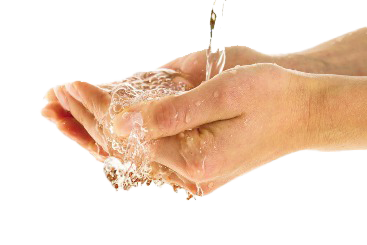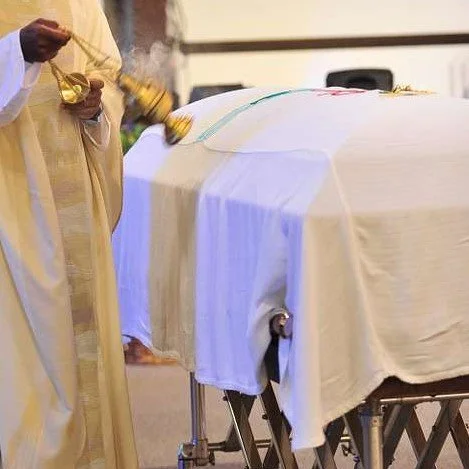Altar Servers
adult altar servers
We rely on our adult parishioners to serve at Funeral Masses and other services during the week or on Saturdays. Training is simple, it takes a 15 minutes brush up (if you were once an altar boy) or 30 minutes if you have never served before. Don't worry, adult servers with bad knees are exempt from kneeling. Most adult servers are asked once every month or two to serve at a Funeral Mass. This is a great opportunity to regularly perform a Corporal Work of Mercy.
If you are interested in becoming an Altar Server, please contact the Parish Office at 908-889-2100.
youth altar servers
Youth Altar serving is one of the greatest honors available to the youth of our parish and a great way to experience Mass by playing an integral role in the celebration. Masses are held on Saturdays at 5 PM and Sundays at 8 AM, 10 AM and 12 NOON. We usually have anywhere from 2 - 4 servers at each Mass. A schedule is prepared and posted on the church bulletin board. Any youth parishioner is eligible to serve after their first communion and after attending the youth altar server training which is usually held twice a year.
If your child is interested in becoming a Youth Altar Server, please contact the Office at 908-889-2100.
Altar Server Guidelines
Altar servers are asked to help prepare the altar as follows:
Credence Table
A. The chalice together with the purificator and pall (the little square of hard fabric) are placed on the credence table on the right of the altar. The chalice is located in the safe in the sacristy, and the purificators and the chalice pall are located in the first drawer in the sacristy. Father Mike’s chalice is silver and usually kept in the safe in a felt bag. NEVER lock the safe; close it but don’t turn the handle or the dial.
B. Cruet of water (kept in fridge in the sacristy, use filtered water if a refill is needed).
C. Large bowl and hand towel for hand washing. The bowl is on top of the fridge and the hand towel ought to be there as well or else use a fresh one from one of the drawers in the sacristy.
D. Usually extra cups for the Blood of Christ are not used for funerals.
Offertory Table:
The table is set up in the narthex as on Sundays. Place on the offertory table a ciborium (kept in the safe) with very large host and small (1 3/8” hosts) Hosts are on the main counter, large in a tupperware container and small hosts are in a brown box) and cruet of wine (kept in fridge, refill with the correct wine if needed).
Father Mike has a ciborium which matches his chalice which ought to be used unless it is not large enough given the expected number of congregants. Ask the priest how many small hosts are needed; usually none or a half a sleeve are the choices. Sometimes there is no offertory procession, so check with the priest before setting up.
Incense
A. 2 briquettes (light #1 before Mass, and light #2 whole or half) after
washing of hands).
B. Censer stand is placed on right side of altar near hallway leading from the
sacristy. Place the extra briquette on the top with the boat.
C. Spoon & dish of incense (called the “boat”) are placed on top of censer
stand with lighter nearby.
D. The lighter is located in the second sacristy in either the ‘junk drawer’ near
the sink or in the metal closet. The incenser and the stand are also in the second sacristy, and incense, the boat and the briquettes are in the metal closet.
Candles
A. Move the paschal candle to center aisle (below the step) and light (if Advent, do not light the Advent candles).
B. Light the 2 candles on either side of the altar table itself.
C. If you are serving a regular Mass you might have to light candles to be carried by altar servers (this doesn’t apply unless you have three servers since there is a rule that we never process with only one lit candle).
Holy Water
Fill holy water bucket about half way and place on the baptismal font.
The holy water is located in a plastic container above the safe in the sacristy and the bucket is in the metal closet in second sacristy.
Pall
Drape the pall (the casket pall) neatly over the first pew on right side (statue of Mary side). The pall is stored on a hangar in the closet in the second sacristy.
If cremains (instead of casket), a small table with a cover cloth and the cremains pall are set up. The cremains pall will be used to cover the cremains container or urn and can likely be found on one of the sacristy drawers.
Mass Procedures
1. At the start of Mass, the celebrant and the altar servers (one with crucifix and one with the holy water, and if applicable, servers with candles) will meet the casket at the back of the Church (just inside the doors) as the casket is ready to come into the Church.
After using the holy water, Katie will start the music and when she starts singing the procession starts; the altar servers and the celebrant will lead the procession up to the altar. (Order: crucifix, candles if any, holy water, celebrant, casket, family). If there is a Eulogy (which is unusual), it is ideally done before the Mass, usually after the celebrant and the altar servers get to their places on the altar. (All sit during the eulogy.)
2. Opening Prayer (ask the celebrant beforehand if he wants a server to hold the book for him).
3. Readings (readers will usually have their readings with them)
4. Gospel
5. Homily
6. Prayer of the Faithful (usually no need to hold the book here)
7. Offertory
A. Usually the gifts are placed ahead of time on a table in the narthex.
B. The cross bearer takes the cross to the narthex to lead the procession to the altar. (Use the center aisle as a clue to the gift bearers.) The procession should start up to altar when the celebrant stands up.
C. Other altar server(s) places BOTH the Missal (which may be next to the priest) and the chalice on the altar table, and then is to go to the celebrant to accept the gifts. Altar server will be handed the cruet of wine.
D. Together, one server brings a cruet of wine and the other the cruet of water to the celebrant. Try to bow in unison before walking back to the credence table.
E. Before the washing of hands, the altar servers bring the censer and the incense to the celebrant. The altar servers stand near their seats while the celebrant incenses the altar table; when finished he will turn and one altar server is to take the incenser from him and replace it back on the incense stand (with the lid resting up away from the hot briquette). The other altar server picks up the water cruet, the bowl and the towel because immediately following is the washing of hands.
8. Washing of hands
Altar server(s) bring the bowl and hand towel, and the cruet of water to the celebrant. (If two servers are involved, one pours a little water on his hands and holds the bowl underneath and the other server holds the hand towel.) Stay to receive back the hand towel and then try to bow in unison. Return to credence table. Note that in practice one server does this step in its entirety as the other server is dealing with the incenser and putting it back on the stand.
9. Consecration
A. The altar servers generally should kneel. Both altar servers can kneel on the altar, both can kneel behind the chairs, or both can kneel in the first side pew. However, Father Mike agrees with maxim “if you can’t get up after kneeling, then don’t get down to kneel” in which case both can stand on the altar, but if one person will stand and one will kneel, then both altar servers should be behind the chairs or in the first side pew (not on the altar) with one standing and one kneeling. The altar servers can decide among themselves which of these they will do.
B. Ringing of the Bells: Three bells; the ringing should be short (a “quick twist”) for each of the three times.
C. After consecration, light #2 charcoal briquette (unless it is pretty obvious it won’t be needed).
10. Communion
A. The celebrant will give communion to the altar servers at their place. The altar servers then sit while the congregation receives communion.
B. If there is a need for an Extraordinary Eucharistic Minister, one or both of the altar servers may be authorized by the celebrant to be an EOM for the current Mass only. This is allowed under the Roman Missal rules.
C. During communion, one altar server will place the water cruet on the altar table; the celebrant will use this after communion is finished to purify the chalice.
When the celebrant signals or places the items to the side of the altar table, the altar servers are to take the ciborium and the paten (as well as the chalice, purificator and pall) from the altar table to the credence table to be purified after the Mass. The idea here is to clear the altar table completely. Then sit. There will be a prayer, and the priest may need a server to hold the book. Next will come more incense.
11. Closing Prayer
A server will usually hold the book for the celebrant.
12. Incense
After the final prayer, the celebrant will incense the casket.
If the celebrant is a visiting priest (or Father Rob), confirm with him beforehand if he will incense after communion. The altar servers bring the censer and the incense to the celebrant, stand while the celebrant incenses and then take the incenser from him when finished and replace it back on the incense stand.
At that point, be ready to fetch the cross and the holy water for the dismissal.
12. Dismissal
A. The celebrant, the cross, the candle (if any) and the holy water bearers proceed to the front of the altar (down the step). The priest will say a prayer, then the servers proceed past the casket and stop and turn back to the altar. Usually at this point the pallbearers will gather and at the priest’s signal the servers proceed to the entrance of the church (order is crucifix, candles if any, then holy water bearer then priest).
B. The cross and candle bearers stop just outside the narthex by the interior door into the church.
C. The celebrant uses the holy water to sprinkle the casket.
D. Stay in place on either side of the aisle at the back of the church until appropriate to go back towards the altar for clean-up.
13. Clean Up
After the funeral the altar servers clean up the altar, including refolding and hanging the pall, refilling the cruets and replacing in the fridge, purifying the holy vessels as required (though usually the priest does this), blowing out the candles and carefully returning the paschal candle to its place, pouring the excess holy water in the holy water back into its container, carefully placing the small pan with the hot briquettes in the sink in the second sacristy so that the go out (do not put hot ashes in the drain; just let them sit and go out over time), and returning the incense stand to the second sacristy, rehanging the incenser and replacing the incense and the boat in the metal cabinet.















